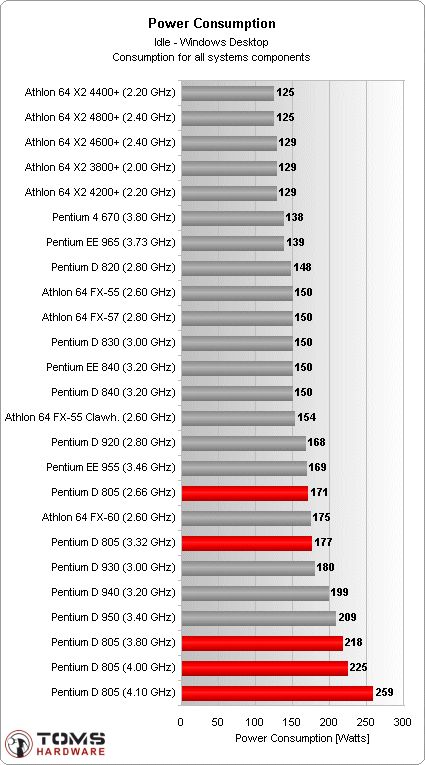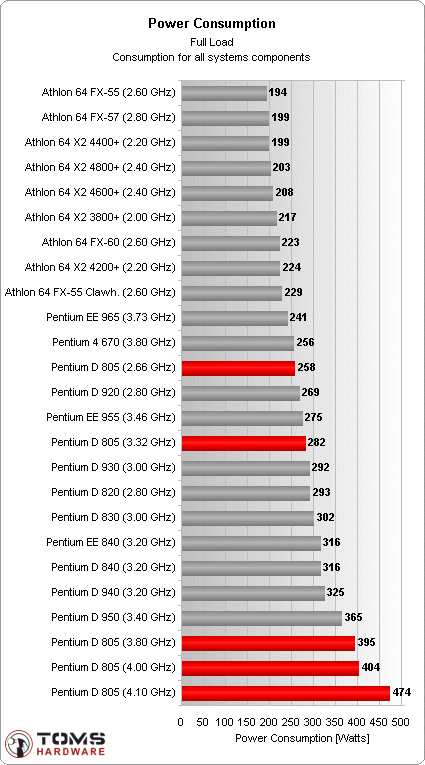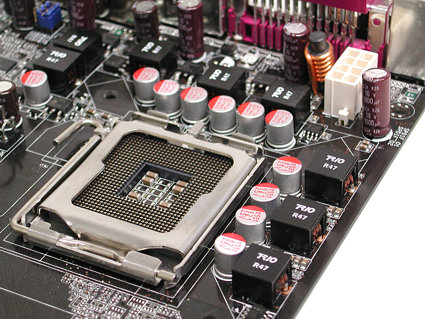A 4.1 GHz Dual Core at $130 - Can it be True?
Power Consumption Levels Top 200 W, Continued
If you look at the idle mode behaviour of this test system when compared to other processors, the power consumption doesn't look bad at all. Compared to a Pentium D 950 running at 3.4 GHz, for example, this system consumes only 40 W more when overclocked to 4.1 GHz. At heavy load, power consumption for the Pentium D 950 climbs to only 101 W. When you take into account the 700 MHz higher clock rate and the low cost of the CPU, power costs for the Pentium D 805 don't seem so bad.
To determine if we needed a new power supply for our test system, we also loaded the CPU in tandem with the graphics card. This produced a measurement of total power consumption of 512 watts at the wall socket! This might sound like a lot, but also requires that you factor in the efficiency rating of the power supply itself. Most PSUs have efficiency ratings of somewhere between 75 and 80 percent, which means that the components in our test system are consuming 384 W of power. Thus, those who have a 500 Watt power supply in their PCs can overclock this CPU without a second thought.
Those who may be concerned about the voltage regulators on their motherboards should purchase a board with an 8-phase regulator. We recommend the Asus workstation motherboard P5WD2-WS Premium for that reason (as we write this story, it's not yet available in North America, but it should be some time this summer).
With an 8-phase regulator, the Asus P5WD2-WS motherboard is designed to meet high power demand.
Get Tom's Hardware's best news and in-depth reviews, straight to your inbox.
Current page: Power Consumption Levels Top 200 W, Continued
Prev Page Power Consumption Levels Top 200 W Next Page Energy Saving Functions Lack C1ETom's Hardware is the leading destination for hardcore computer enthusiasts. We cover everything from processors to 3D printers, single-board computers, SSDs and high-end gaming rigs, empowering readers to make the most of the tech they love, keep up on the latest developments and buy the right gear. Our staff has more than 100 years of combined experience covering news, solving tech problems and reviewing components and systems.



